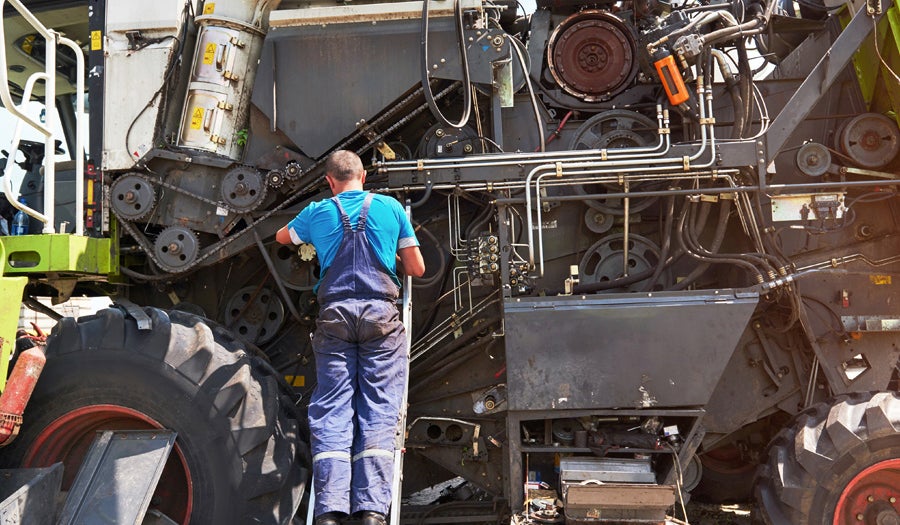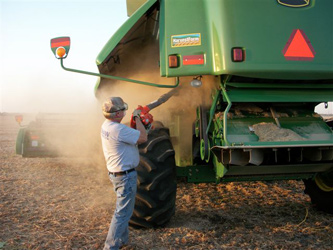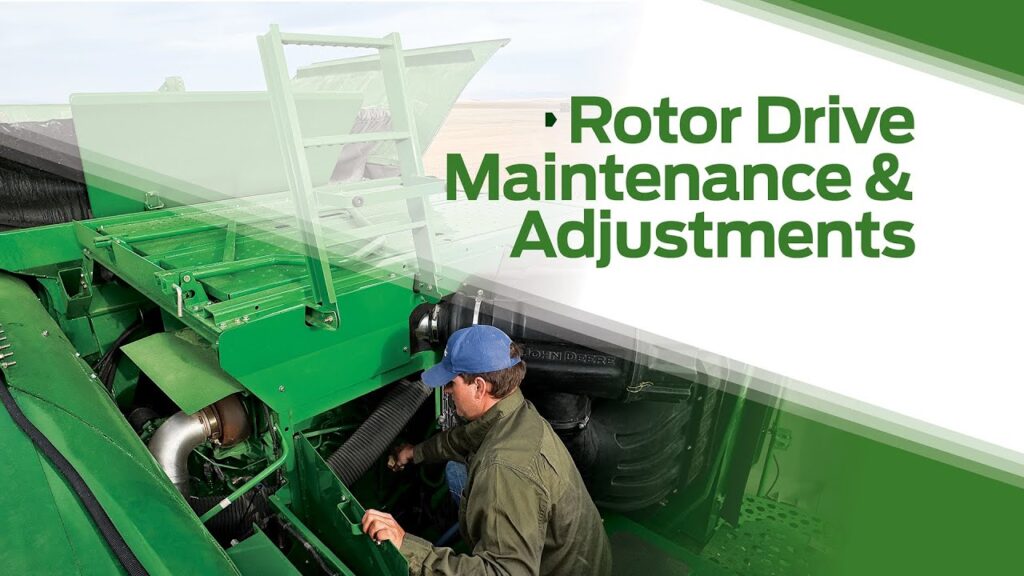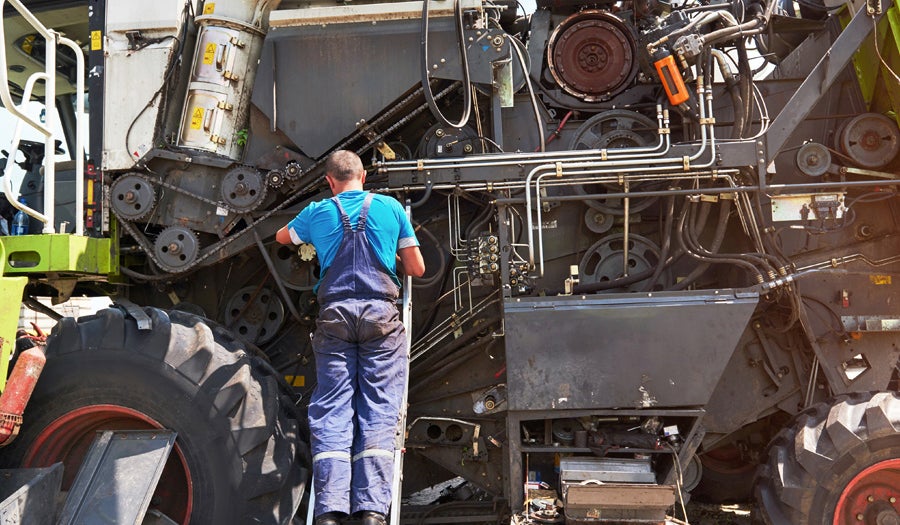A combine harvester is an expensive piece of equipment essential for farmers to harvest their crops. However, without proper maintenance, the combine harvester can quickly become inefficient and break down, causing delays during the harvest season. That’s why farmers need to know how to maintain and adjust their combine harvester to ensure that it operates at peak performance. Here is the ultimate guide to combine harvester maintenance and adjustment.
- Conduct Regular Maintenance Checks
To keep your combine harvester operating at peak performance, regular maintenance checks are essential. Some of the key areas to check during routine maintenance include:
• The engine: Check the oil and coolant levels regularly, and replace the oil and coolant as needed. Replace the air filter every 200-300 hours of operation, or more frequently if you’re operating in dusty conditions.
• The transmission: Check the fluid level regularly and replace the fluid as needed. Check for leaks and worn or damaged parts and replace them immediately.
• The hydraulic system: Check the hydraulic fluid level regularly and replace it as needed. Check for leaks and worn or damaged parts and replace them immediately.
• The cutting and threshing components: Check the header, reel, concave, cylinder, and separator for wear and damage, and replace any worn or damaged parts immediately.
• The cleaning system: Check for any clogs in the cleaning system and remove any debris. Check for any damaged parts and replace them as needed.
• The electrical system: Check the battery’s condition and ensure that it is charged. Check the wiring for any damage or wear and replace it as needed.
By conducting regular maintenance checks, you can identify and address any issues before they cause major problems.
- Adjust the Combine Harvester for Crop Conditions
Adjusting the combine harvester for the crop conditions is essential to ensure it operates efficiently. Some of the key areas to adjust include:
• The header height: Adjust the header height to ensure that it is level with the ground and that it is not digging into the soil.
• The reel speed: Adjust the reel speed to match the crop conditions. For heavy crop conditions, increase the reel speed, and for light crop conditions, decrease the reel speed.
• The concave clearance: Adjust the concave clearance to match the crop conditions. For small grains, such as wheat or barley, use a tight concave clearance, and for large grains, such as corn or soybeans, use a wider concave clearance.
• The cylinder speed: Adjust the cylinder speed to match the crop conditions. For tough straw, increase the cylinder speed, and for easy threshing crops, decrease the cylinder speed.
By adjusting the combine harvester for the crop conditions, you can ensure that it operates at peak efficiency and maximizes yield.
- Clean the Combine Harvester Regularly
Cleaning the combine harvester regularly is essential to prevent buildup and ensure that it operates efficiently. Some of the key areas to clean include:
• The grain tank: Clean out the grain tank regularly to prevent grain buildup and ensure that it can hold the maximum capacity.
• The cleaning system: Clean out the cleaning system regularly to prevent debris buildup and ensure that it operates efficiently.
• The engine compartment: Clean the engine compartment regularly to prevent debris buildup and ensure that the engine operates efficiently.
• The radiator: Clean the radiator regularly to prevent debris buildup and ensure that the engine doesn’t overheat.
By cleaning the combine harvester regularly, you can prevent buildup and ensure that it operates at peak efficiency.
- Store the Combine Harvester Properly
Storing the combine harvester properly during the off-season is essential to prevent damage and ensure that it is ready to use the following harvest season. Some key tips for proper storage include:
• Clean the combine harvester thoroughly before storing it to prevent debris buildup.
• Store the combine harvester in a dry, secure location to prevent damage from weather or theft.
• Drain all fluids and replace them with fresh fluids before storing the combine harvester to prevent contamination and ensure that the fluids are fresh for the next season.
• Store the combine harvester with the header at ground level to prevent damage to the header and feeder house.
By storing the combine harvester properly, you can prevent damage and ensure that it is ready to use for the next harvest season.
Combine Harvester Parts That Need Maintenance
To ensure that your combine harvester operates at peak performance, it is essential to maintain and replace parts as needed. Some of the key combine harvester parts that need maintenance include:
• Belts: Belts can wear and stretch over time, causing them to slip or break. Regularly check the belts for wear and replace them as needed.
• Bearings: Bearings can wear out over time, causing the parts they support to fail. Regularly check the bearings for wear and replace them as needed.
• Chains: Chains can stretch and wear over time, causing them to break or slip. Regularly check the chains for wear and replace them as needed.
• Augers: Augers can wear and become damaged over time, causing them to become less efficient. Regularly check the augers for wear and replace them as needed.
• Blades: Blades can wear and become dull over time, causing them to become less efficient. Regularly check the blades for wear and sharpen or replace them as needed.
By maintaining and replacing these key parts as needed, you can ensure that your combine harvester operates at peak performance and maximizes yield.
In conclusion, proper maintenance and adjustment of your combine harvester are essential to ensure that it operates at peak performance and maximizes yield. Conducting regular maintenance checks, adjusting the combine harvester for crop conditions, cleaning the combine harvester regularly, and storing the combine harvester properly are key steps to ensure that it operates efficiently. Additionally, maintaining and replacing key combine harvester parts, such as belts, bearings, chains, augers, and blades, is essential to keep your combine harvester running smoothly. By following these above mention tips, you can ensure that your combine harvester operates efficiently and maximizes your harvest yield.




